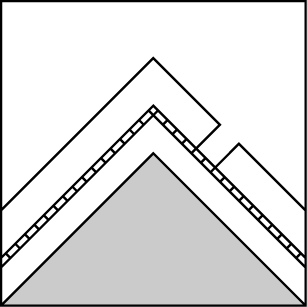Basic Information
Observation Details
Observation Date:
February 19, 2023Submitted:
February 19, 2023Observer:
NWAC Observer - Brooke Maushund & Matt PrimomoZone or Region:
Stevens PassLocation:
Skyline Area (NE-E-SW// 3800'-5300')Signs of Unstable Snow
Recent Avalanches?
None ObservedCracking?
None ExperiencedCollapsing?
None ExperiencedMedia/Attachments






Advanced Information
Weather Summary
Cloud Cover:
OvercastTemperature:
<32°FWind:
Moderate , WNew/Recent Snowfall:
HST 36cmSkies stayed socked in at OVC throughout the day, with steady snowfall slightly increasing from the morning (S-1) into the afternoon (S1 to S1+). Westerly winds increased with snowfall, hovering around light with moderate gusts. Ample snow was available for transport and could be seen blowing in both the ATL and NTL. Past wind transport evident even in the BTL.
A ski cut on a test slope triggered a small loose dry avalanche that did gain some momentum on the recently buried crust.
Snowpack Observations
Conditions changed noticeably with elevation and over the course of a few hours during the day. Early in the day and at lower elevation, we noticed no signs of instability. By 11am and above 5,000ft we found some isolated cracking with upper snow layers, though still not enough to present much danger. A ski cut on a test slope triggered a small loose dry avalanche that did gain some momentum on the recently buried crust. During our exit on the PCT, the snow surface had become a little sticky and moist.
Tilt tests showed three potential failure planes all within the upper snowpack above the 2/13 crust, which was generally down about 25-35cm during the day.
The 2/13 crust itself seemed fairly thick. The snow beneath it was noticeably weaker, but little frozen columns indicating that water had percolated down below the crust.
Targeting the MLK crust, we found it down 115cm from the surface on an ENE aspect at 5,300ft. We found variable results with a deep tap test (DTM Resistant Planar, and DTM Sudden Collapse). A propagation saw test indicated that slides could still run on this layer, with a PST 45/115 End.
Avalanche Problems
| Problem | Location | Distribution | Sensitivity | Size | Comments |
|---|---|---|---|---|---|
 Persistent Slab
Persistent Slab
|
|
Weak Layer(s):
Jan 15, 2023 (MFcr)
Comments: The MLK crust has created a structure that showed likelihood of sudden planar failure with moderate force, and a propensity for propagation (DT SP & PST 45/115 (End) down 118cm on 230115). The new loading and high winds of the incoming storm may cause already present weak points in the existing snowpack structure to become more reactive. While the persistent slab problem on the MLK crust has been stubborn to trigger, if it does fail it has the structure to propagate and cause a very large slide. Failures of new slabs, especially NTL and ATL, formed during the storm could also step down to this layer to create a larger slide than expected. |
|||
 Wind Slab
Wind Slab
|
|
Comments: While the wind blown snow we observed today was harder to trigger with minimal cracking, conditions were changing quickly as more snow fell and was transported with increasing winds. Past wind transport was observed even in the BTL. |
